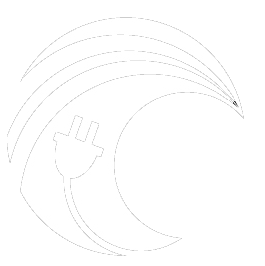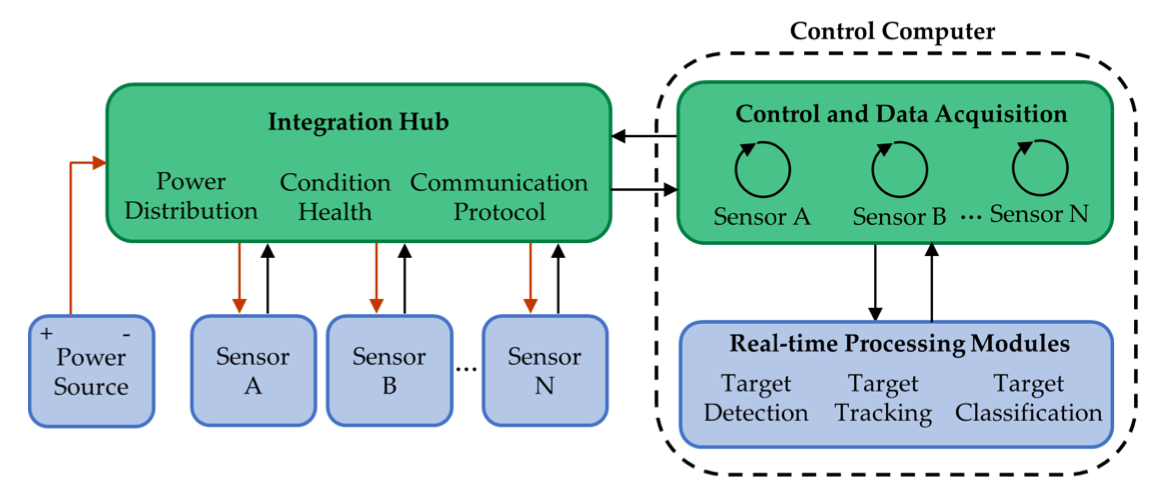Project Motivation:
Marine energy converters will inherently modify the environment in which they operate and potential impacts of their presence and operation may be of environmental concerns. By building an understanding of these interactions during the early stages of technology development, mitigation of undesirable environmental impacts prior scale-up to large arrays of marine energy converters may be possible. One of PMEC’s solutions for studying the uncertainties around these potential environmental impacts is the Adaptable Monitoring Package (AMP).
Summary:
There are many challenges inherent to studying the potential environmental impacts of marine energy converters. First is the range of potential stressors that includes, but is not limited to, sound produced by marine energy converters, near-field physical effects on the environment (e.g., seabed, currents, waves), and collision or entanglement. Direct measurements of these stressors is challenging at sites suitable for marine energy development given that they are inherently energetic and some require observations in the immediate vicinity of marine energy converters. Furthermore, events of concern (e.g., collisions or entanglement) that are likely to be rare, if they occur at all, and will require high duty cycle sampling to observe all events of interest.
The AMP was designed to take a customizable, integrated approach to environmental monitoring by supporting a broad range of instrumentation. The AMP itself consists of three primary components: the package of integrated sensors, an external power source, and a control computer. Some elements are deployment-agnostic (e.g., integration hub), while other elements (e.g., sensors) are specific to a deployment.
Schematic of the AMP. The sensor packages can be tailored to address specific environmental concerns and the deployment hardware is custom-designed for each application
The AMP can be configured to integrate almost any oceanographic sensor that operates on a voltage inputs of 3-48 VDC and uses common communications protocols (e.g., TCP/IP, UDP, RS-232/485). Sensors that have been integrated and deployed as part of an AMP package include hydrophone arrays, imagine sonars, acoustic Doppler profiles, an echosounder, stereo-optical cameras, and fish tag receivers. During extended deployments, these sensors are kept clear with biofouling mitigation hardware (e.g., UV lights, mechanical wipers for optical ports). AMPs have also been deployed with a rotator that allows the system to tilt and alter the field of view for a subset of the sensors. Back-end, near real-time processing of data streams allows for event-based triggering of instruments/data storage to record data of key events, while limiting the acquisition of massive volumes of data lacking signals or events of interest. Similarly, integrated control of the instrumentation mitigates cross-talk for all active acoustics.
To date, the AMP has been deployed in numerous different configurations and in unique environments as summarized in Polagye et al. (2020). These have included autonomous and cabled packages deployed in the seabed in the absence of marine energy converters, an AMP integrated with the Fred.Olsen Livesaver at the Wave Energy Test Site (WETS) in Hawai’i, and a unit deployed near a small tidal turbine deployed from a moored vessel in Agate Pass, Washington. Different AMP configurations have been deployed at sea for over 360 days with system availability exceeding 90%.
The third-generation AMP prior to a 118 day deployment in Sequim Bay, WA. This version of the AMP includes a stereo-optical system with LED illumination, two imaging sonars, an echosounder, and acoustic Doppler current profiler, a hydrophone array (x4), and UV lights and mechanical wipers for biofouling mitigation. The entire forward face of the AMP can rotate to fine-tune the field of view.
Current Results:
Much of PMEC’s work to-date using AMP data streams has focused on the optical camera and imaging sonar data streams with an emphasis on target tracking and classification. In future deployments with marine energy converters processing of similar data streams and other covariates (e.g., time, currents, waves, or sound) will be used to quantify presence/absence of animals in the vicinity of marine energy converters, whether these environmental factors impact the distribution of animals near devices, and to identify direct devices interactions like collisions. Similar analysis of target presence and classification with environmental covariates has already been performed on data obtained in the absence of marine energy converters.
An example of post-processed data describing the detection, tracking, and classification of imagine sonar data (Cotter and Polagye [2020a,b]).
ONGOING Work:
During the AMP deployment on R/V Russell Davis light with a small tidal turbine optical imagery observed many jellyfish and forage fish (sand lance) in the vinicity of the rotor. We are currently analyzing data to better understand interactions between the turbine and these animals.
Future Work:
PMEC has two AMP deployments planned for late-2023 and 2024 that involve integration with marine energy converters. The first will be an AMP integrated with a tidal turbine lander in Sequim Bay, WA in partnership with Pacific Northwest National Laboratory. PMEC will use this deployment to study near-field interactions and collisions risks using the stereo cameras and imaging sonars. Second, an AMP will also be deployed at the Wave Energy Test Site in Hawai’i where it will be integrated with the reaction ring on a point-absorber wave energy converter (Oscilla Triton-C). PMEC researchers will investigate the presence/absence of biota in and around the hull, tethers, and heave ring of the device; confirm the hypotheses that marine animal entanglement with tethers is unlikely; and analyze hydrophone array data to identify noise radiated by the wave energy converter, site infrastructure, and other ambient noise sources.
A rendering of the a version of the AMP (left) to be deployed with a tidal turbine lander system in Sequim Bay, WA. This system will be used to study collision risks and near-field interactions between the rotor and animals. (right) A rendering of the 3G-AMP deployed on the heave ring of the Oscilla Triton-C and a picture of the 3G-AMP installed on the heave ring at dry dock. This system will be used to study the presence/absence of animals around the Triton-C, confirm the hypothesis that the risk of entanglement in the tethers is unlikely, and to quantify the sound produced by the operation wave energy converter and associated infrastructure.
Commercialization:
MarineSitu
Software:
The software to operate the AMP is open source. The full software package can be downloaded here. An additional link to the license, which is also included with the full package, is here. Note that there are third-party applications provided as a courtesy only, please check for third party licenses prior to use.
Research Team:
More Information:
Polagye et al (2020). Adaptable Monitoring Package Development and Deployment: Lessons Learned for Integrated Instrumentation at Marine Energy Sites. J. Mar. Sci. Eng., 8, 553.
Cotter, E., & Polagye, B. (2020). Automatic Classification of Biological Targets in a Tidal Channel Using a Multibeam Sonar, J. Atmos. Ocean. Techn., 37(8), 1437-1455.
Cotter, E. and Polagye, B. (2020), Detection and classification capabilities of two multibeam sonars. Limnol Oceanogr Methods, 18: 673-680.




![An example of post-processed data describing the detection, tracking, and classification of imagine sonar data (Cotter and Polagye [2020a,b]).](https://images.squarespace-cdn.com/content/v1/5aa9f94e5ffd209c73921fa3/1629304009953-DEFXG0DE0IYJFZJQI16U/image001.jpg)









